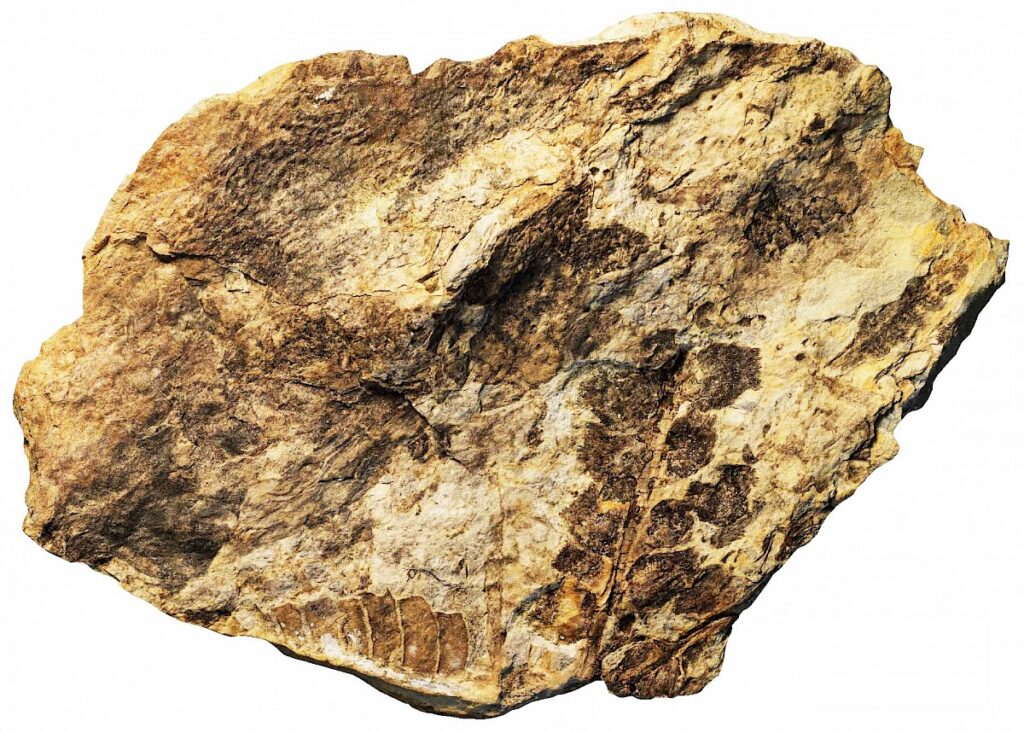A group of researchers from the Department of Earth Sciences (DCT) of the Faculty of Science and Technology of the University of Coimbra (FCTUC) discovered the fossil of a new plant species that is 300 million years old in the Bussaco Basin, in the center of the country.
The new species, presented in a scientific article to be published in September in Review of Palaeobotany and Palynology, belongs to the family of Cordaitals, a primitive group of modern gymnosperms, was named Florinanthus bussacensis. This fossil corresponds to a male cone (strobilus) of a gymnosperm from the now extinct order of Cordaitals. The discovery allows us to know how these plants reproduced.
According to Pedro Correia, professor at the DCT and researcher at the Geosciences Center of FCTUC, «the results achieved so far give a greater perception of the richness and floristic diversity that existed in the Bussaco Basin, but also of the environmental and climatic conditions that the floras lived, in an intramountain environment, after a climatic transition (from a humid climate to a dry climate) that occurred in the Kasimovian-Gzhelian interval».
The discovery of this new fossil, as the paleontologist refers, «also provides a greater insight into the variability of the morphological and ontogenetic characteristics of the Cordaitals. Due to the difficult preservation and recognition of these reproductive structures, the diversity of this group of plants is still little known», clarifies the specialist in paleobotany.
«The greatest difficulty in working with plant fossils is connecting the different fossilized parts of these plants and establishing a kinship relationship. Most of the remains of these floras preserved in the fossil record correspond to leaves, stems, roots and seeds», he concludes.
At the moment, the team of researchers from FCTUC is preparing a new paleobotanical study of the Carboniferous of Bussaco, in collaboration with specialists from Brazil.




















Comments